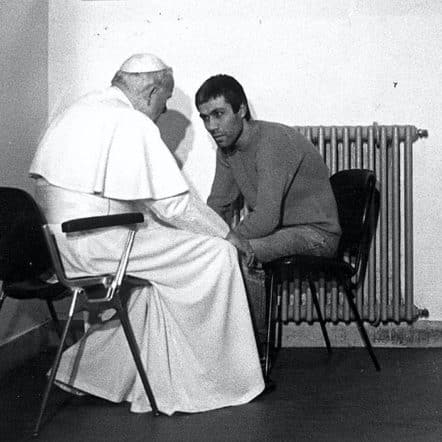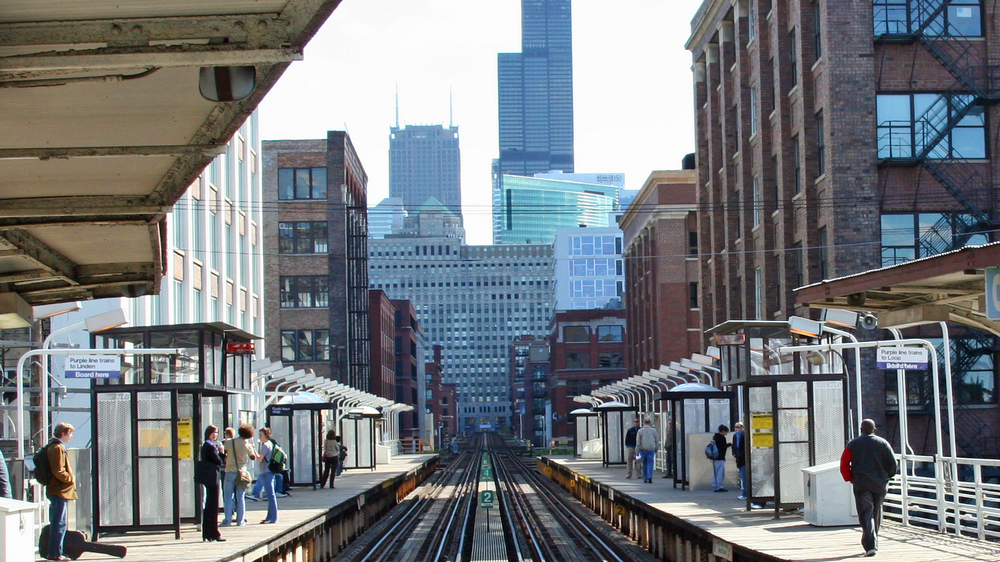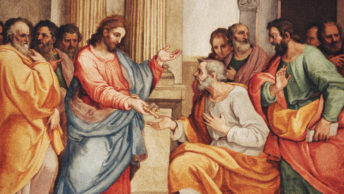Then Jesus said, “Father, forgive them, they know not what they do.” (Luke 23:34)
In His final hours, Jesus launches out on the road of forgiveness, clearing the way for us to share and receive forgiveness. Lent is a special time when we may reflect that all of us are sinners and desperately need forgiveness; of this a devout Christian does not need to be convinced.
Jesus makes it clear that in order to be forgiven, humans must forgive others. If you forgive others their transgressions, your heavenly Father will forgive you. (Matthew 6:14) In the same way, every nation is invited by Him to adopt a generous spirit in evaluating the motivations of those who caused them injuries, however appalling they might be.
Between 1943 and 1945, it is estimated that from 60,000 to 100,000 Poles died at the hands of Ukrainian nationalists in Volhynia and Eastern Galicia, regions that were in German-occupied Poland and form a part of present-day Ukraine. The killings were directly linked with radical Ukrainian nationalist Stepan Bandera’s Organization of Ukrainian Nationalists and its military arm, the Ukrainian Insurgent Army. As part of retaliatory violence, Poles murdered between 10,000 and 12,000 Ukrainians. The policy of ethnic cleansing against Polish nationals, which continued practically unabated till the Soviets arrived, was aimed to resolve the question as to which country these lands should belong after the war. Documents from the period show that the planned extermination of the Polish population was called an “anti-Polish operation.” Among the victims of the Ukrainian nationalists “cleansing Ukraine of a foreign element” were also the citizens of the Republic of Poland of Jewish, Czech, Hungarian, German, and Russian descent.
There were more Christian martyrs in the twentieth century than in all nineteen previous centuries combined. The massacres in Volhynia and Eastern Galicia, which are still relatively unknown to English-speaking audiences, deserve to be explained in greater detail as not only due to a massive bloodshed and suffering but also because among them might have been Christians who facing trials, did not revoke their faith and even forgave the killers like the divine Redeemer, and now belonging to The “Church Triumphant” in Heaven expect the same from us.
Sr Maria (Andrzeja) Ossakowska and Sr Jadwiga (Alojza Gano) of the Sacred Heart of Jesus congregation were killed on April, 15 1943 in Lubieszów. On that woeful day, 150 people of the Eastern Rite Church, among whom were two nuns, were herded into a wooden building and threatened with death by burning alive if they did not renounce Catholic faith. Most of them refused. A blood-curdling cry went up when the building was set on fire. Then, the courageous sisters tried to console the frightened people by praying and singing religious hymns.
In Volhynia, there were also Carmelites who were killed – Fr. Kamil Gleczman, – the superior of Carmelite monastery in Nowy Wiśniowiec, and Br. Cyprian Lasoń – a cook, a sacristan and a gardener. In 1943, when the UPA attacks intensified, the monastery became a shelter for the local people. Fr Kamil got permission from the Provincial to leave the place but he decided to remain for the benefit of the people. He also did not join Hungarian soldiers leaving the town on February 7, 1944. Both friars, 40 men, 150 women and children were brutally murdered and the church was burned down that day during the attack by UPA nationalists.
On July 11, 1943 the slaughter began, this is when the genocide in Volhynia reached its apex. Almost every Polish home was surrounded by no fewer than 30-50 peasants with blunt weapons: axes, pitchforks, scythes, knives and two with firearms. They threw hand grenades inside houses, if someone refused to open the door. Victims were scalped, had their noses, lips and ears cut off. They had their eyes gouged out, hands and heads chopped off. Women had their breasts sliced off and pregnant ones were nailed to the ground with bayonets. Children were ripped apart by their legs or impaled on pitchforks. Priests were severed with a saw. Some wounded remained in agony for two or three days. Many were rounded up, locked into churches, houses, barns which were set on fire or thrown into wells.
In the first half of 1944, Lwów Home Army managed to intercept the order issued by UPA: “In the view of the progress of the Bolsheviks on the Eastern Front, the liquidation of Poles should be accelerated. The action should be carried out in accordance with the rules: Polish villages are to be burned, and their people are to be exterminated. …” The ocean of suffering is immense, only God knows their misery. It is shocking that humans can behave with such bestiality towards others. One might say that it can`t have happened without the handiwork of the devil.
The crimes committed by the UPA against the Poles in Volhynia and Eastern Galicia were the subject of the Poland`s Institute of National Remembrance investigation. The Commission headed by the prosecutor Piotr Zając determined “The Volhynian massacres have all the traits of genocide listed in the 1948 UN Convention on the Prevention and Punishment of the Crime of Genocide.” On 22 July 2016 the Parliament of Poland unanimously adopted a resolution recognizing the massacres as genocide. In response to this declaration the Ukrainian Parliament argued vehemently, calling this an attempt of ”politicization of tragic chapters of the Ukrainian-Polish history.” The bypassing of history is especially egregious as there are so many possibilities nowadays for fertile collaboration among politicians and historians.
If we want to have a deeper insight into this subject, then numerous Ukrainian acts of solidarity and mercy towards Poles cannot be left out. The Book of the Righteous of the Eastern Borderlands gives a perfect collection of information about the Ukrainians who warned against upcoming attack, showed an escape route, provided shelter, treated the wounded, misled the attackers, helped to bury the victims, disobeyed the order to kill Poles, etc.. Polish historians determined that in 502 localities 1341 of the Righteous had saved the lives of 2527 Poles, whereas 384 of them paid the highest price.
On November 18, 1965, as Poland was preparing for the celebration of the Millennium of Christianity, Polish Roman Catholic Bishops gathered at the Second Vatican Council sent a famous letter to their German peers known as “the Letter of Reconciliation of the Polish Bishops to the German Bishops.” It’s penultimate paragraph speaks volumes “In this most Christian but also very humane spirit, we extend our hands to you at the conclusion of the Council. We forgive and ask for forgiveness. Only if you, German Bishops and Council Fathers, grasp our hands held out to you in a gesture of brotherhood will we be able to celebrate our Millennium in the most Christian way and in peace.”
John Paul II’s pilgrimage to Ukraine on June, 26 2001 was a watershed event in the process of reconciliation between Poles and Ukrainians. During the Holy Mass in Lviv, the Pontiff said “Today, in praising God for the indomitable fidelity to the Gospel of these his Servants, let us feel ourselves gently nudged to recognize the infidelities to the Gospel of not a few Christians of both Polish and Ukrainian origin living in these parts. It is time to leave behind the sorrowful past. The Christians of the two nations must walk together in the name of the one Christ, towards the one Father, guided by the same Holy Spirit, the source and principle of unity. May pardon given and received spread like a healing balm in every heart. May the purification of historical memories lead everyone to work for the triumph of what unites over what divides, in order to build together a future of mutual respect, fraternal cooperation and true solidarity.” Having heard these words, many of those gathered wept openly and hugged each other.
In June 2013, in Warsaw, marking the 70th anniversary of WWII massacres the President of the Polish Bishops Conference, Archbishop Józef Michalik, and Archbishop Sviatoslav Shevchuk of Kyiv-Halych, Ukraine, major archbishop of the Ukrainian Catholic Church, signed an appeal for mutual forgiveness and reconciliation in which we read ”We are aware that only the truth can set us free, the truth, which does not beautify and does not omit, which does not pass over in silence, but leads to forgiveness.” The first declaration of this type was drawn up in 2005 by the prelates of both Catholic Churches urging for a mutual pardon and reconciliation between Polish and Ukrainian people.
Far too much blood has been spilled in Europe, thus any attempt of resorting to weapons and changing borders would entail additional suffering of millions of people and defy God himself. It is a fearful thing to fall into the hands of the living God. The great and the less great who are supposed to be governing us ought to bear it in their minds before they decide to start a full-scale war.
There can be no justice and permanent peace without mutual forgiveness, otherwise the world falls into a circle of perpetual vengeance. Thus the Christian virtue of forgiveness must involve even the greatest evils: the killing of the innocent people, genocide and forced relocation.
On June 29, 1867, Pope Pius IX canonized Josaphat Kuncewicz, a priest of the Basilian Order, born in Volhynia. On the tercentenary of his martyrdom, Pope Pius XI declared St. Josaphat the heavenly Patron of Reunion between Orthodox and Catholics. Today he seems to be an invaluable patron of reconciliation between Poland and Ukraine.








